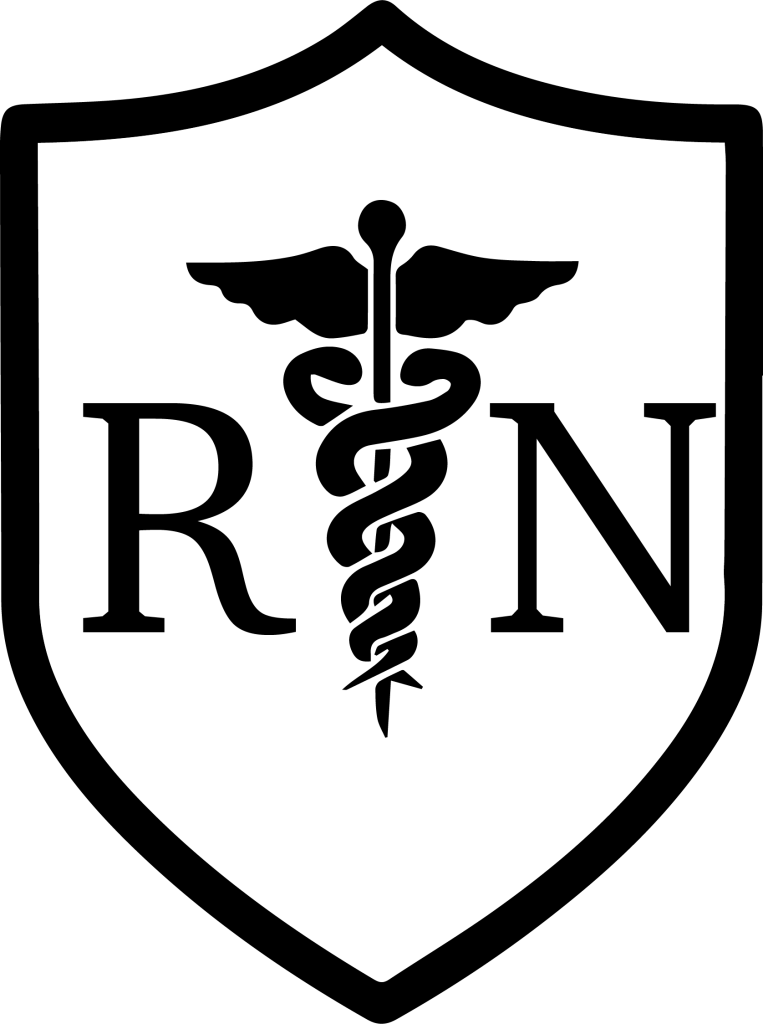6.3 Ethical Dilemmas
Nurses frequently find themselves involved in conflicts during patient care related to opposing values and ethical principles. These conflicts are referred to as ethical dilemmas. An ethical dilemma results from conflict of competing values and requires a decision to be made from equally desirable or undesirable options. See Figure 6.11[1] for an illustration of conflict resulting from an ethical dilemma.

An ethical dilemma can involve conflicting patient’s values, nurse values, health care provider’s values, organizational values, and societal values associated with unique facts of a specific situation. For this reason, it can be challenging to arrive at a clearly superior solution for all stakeholders involved in an ethical dilemma. Nurses may also encounter moral dilemmas where the right course of action is known but the nurse is limited by forces outside their control. See Table 6.3a for an example of ethical dilemmas a nurse may experience in their nursing practice.
Table 6.3a Examples of Ethical Issues Involving Nurses
| Workplace | Organizational Processes | Client Care |
|---|---|---|
|
|
|
Read more about Ethics Topics and Articles on the ANA website.
According to the American Nurses Association (ANA), a nurse’s ethical competence depends on several factors:[2]
- Continuous appraisal of personal and professional values and how they may impact interpretation of an issue and decision-making
- An awareness of ethical obligations as mandated in the Code of Ethics for Nurses with Interpretive Statements[3]
- Knowledge of ethical principles and their application to ethical decision-making
- Motivation and skills to implement an ethical decision
Nurses and nursing students must have moral courage to address the conflicts involved in ethical dilemmas with “the willingness to speak out and do what is right in the face of forces that would lead us to act in some other way.”[4]See Figure 6.12[5] for an illustration of nurses’ moral courage.

Nurse leaders and organizations can support moral courage by creating environments where nurses feel safe and supported to speak up.[6] Nurses may experience moral conflict when they are uncertain about what values or principles should be applied to an ethical issue that arises during patient care. Moral conflict can progress to moral distress when the nurse identifies the correct ethical action but feels constrained by competing values of an organization or other individuals. Nurses may also feel moral outrage when witnessing immoral acts or practices they feel powerless to change. For this reason, it is essential for nurses and nursing students to be aware of frameworks for solving ethical dilemmas that consider ethical theories, ethical principles, personal values, societal values, and professionally sanctioned guidelines such as the ANA Nursing Code of Ethics.
Frameworks for Solving Ethical Dilemmas
Systematically working through an ethical dilemma is key to identifying a solution. Many frameworks exist for solving an ethical dilemma, including the nursing process, four quadrant approach, the MORAL model, and the organization-focused PLUS Ethical Decision-Making Model.[7] When nurses use a structured, systematic approach to resolving ethical dilemmas with appropriate data collection, identification and analysis of options, and inclusion of stakeholders, they have met their legal, ethical, and moral responsibilities, even if the outcome is less than ideal.
Nursing Process Model
The nursing process is a structured problem-solving approach that nurses may apply in ethical decision-making to guide data collection and analysis. See Table 6.3b for suggestions on how to use the nursing process model during an ethical dilemma.[8]
Table 6.3b Using the Nursing Process in Ethical Situations[9]
| Nursing Process Stage | Considerations |
|---|---|
| Assessment/Data Collection |
|
| Assessment/Analysis |
|
| Diagnosis |
|
| Outcome Identification |
|
| Planning |
|
| Implementation |
|
| Evaluation |
|
Four Quadrant Approach
The four quadrant approach integrates ethical principles (i.e., beneficence, nonmaleficence, autonomy, and justice) in conjunction with health care indications, individual and family preferences, quality of life, and contextual features.[10] See Table 6.3c for sample questions used during the four quadrant approach.
Table 6.3c Four Quadrant Approach[11]
| Health Care Indications
(Beneficence and Nonmaleficence)
|
Individual and Family Preferences
(Respect for Autonomy)
|
| Quality of Life
(Beneficence, Nonmaleficence, and Respect for Autonomy)
|
Contextual Features
(Justice and Fairness)
|
MORAL Model
The MORAL model is a nurse-generated, decision-making model originating from research on nursing-specific moral dilemmas involving client autonomy, quality of life, distributing resources, and maintaining professional standards. The model provides guidance for nurses to systematically analyze and address real-life ethical dilemmas. The steps in the process may be remembered by using the mnemonic MORAL. See Table 6.3d for a description of each step of the MORAL Model[12],[13]
Table 6.3d MORAL Model
| M: Massage the dilemma | Collect data by identifying the interests and perceptions of those involved, defining the dilemma, and describing conflicts. Establish a goal. |
|---|---|
| O: Outline options | Generate several effective alternatives to reach the goal. |
| R: Review criteria and resolve | Identify moral criteria and select the course of action. |
| A: Affirm position and act | Implement action based on knowledge from the previous steps (M-O-R). |
| L: Look back | Evaluate each step and the decision made. |
PLUS Ethical Decision-Making Model
The PLUS Ethical Decision-Making Model was created by the Ethics and Compliance Initiative to help organizations empower employees to make ethical decisions in the workplace. This model uses four filters throughout the ethical decision-making process, referred to by the mnemonic PLUS:
- P: Policies, procedures, and guidelines of an organization
- L: Laws and regulations
- U: Universal values and principles of an organization
- S: Self-identification of what is good, right, fair and equitable[14]
The seven steps of the PLUS Ethical Decision-Making Model are as follows:[15]
- Define the problem using PLUS filters
- Seek relevant assistance, guidance, and support
- Identify available alternatives
- Evaluate the alternatives using PLUS to identify their impact
- Make the decision
- Implement the decision
- Evaluate the decision using PLUS filters
- “Ethical dilema.png” by Meredith Pomietlo for Chippewa Valley Technical College is licensed under CC BY 4.0 ↵
- American Nurses Association. (2021). Nursing: Scope and standards of practice (4th ed.). American Nurses Association. ↵
- American Nurses Association. (2015). Code of ethics for nurses with interpretive statements. American Nurses Association. https://www.nursingworld.org/practice-policy/nursing-excellence/ethics/code-of-ethics-for-nurses/coe-view-only/ ↵
- American Nurses Association (ANA). Ethics topics and articles. https://www.nursingworld.org/practice-policy/nursing-excellence/ethics/ethics-topics-and-articles/ ↵
- “Moral courage.png” by Meredith Pomietlo for Chippewa Valley Technical College is licensed under CC BY 4.0 ↵
- American Nurses Association. (2021). Nursing: Scope and standards of practice (4th ed.). American Nurses Association. ↵
- American Nurses Association. (2021). Nursing: Scope and standards of practice (4th ed.). American Nurses Association. ↵
- American Nurses Association. (2021). Nursing: Scope and standards of practice (4th ed.). American Nurses Association. ↵
- American Nurses Association. (2021). Nursing: Scope and standards of practice (4th ed.). American Nurses Association. ↵
- American Nurses Association. (2021). Nursing: Scope and standards of practice (4th ed.). American Nurses Association. ↵
- American Nurses Association. (2021). Nursing: Scope and standards of practice (4th ed.). American Nurses Association. ↵
- American Nurses Association. (2021). Nursing: Scope and standards of practice (4th ed.). American Nurses Association. ↵
- Crisham, P. (1985). Moral: How can I do what is right? Nursing Management, 16(3), 44. https://journals.lww.com/nursingmanagement/citation/1985/03000/moral__how_can_i_do_what_s_right_.6.aspx ↵
- Ethics & Compliance Initiative. (2021). The PLUS Ethical Decision Making Model. https://www.ethics.org/resources/free-toolkit/decision-making-model/ ↵
- Ethics & Compliance Initiative. (2021). The PLUS Ethical Decision Making Model. https://www.ethics.org/resources/free-toolkit/decision-making-model/ ↵
Conflict resulting from competing values that requires a decision to be made from equally desirable or undesirable options.
The willingness of an individual to speak out and do what is right in the face of forces that would lead us to act in some other way.
Feelings occurring when an individual is uncertain about what values or principles should be applied to an ethical issue.
Feelings occurring when correct ethical action is identified but the individual feels constrained by competing values of an organization or other individuals.
Feelings occurring when an individual witnesses immoral acts or practices they feel powerless to change.

